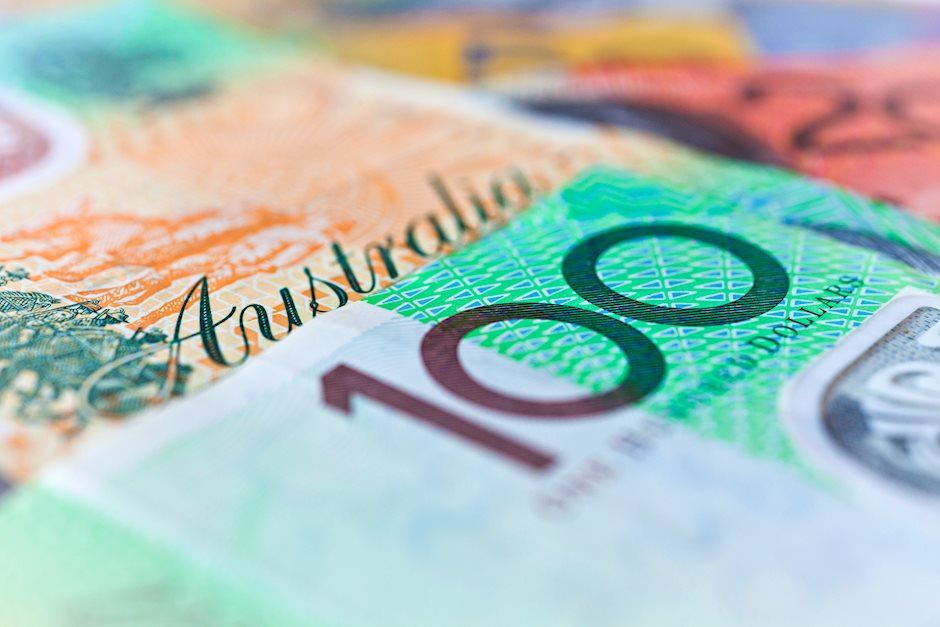AUD/USD retreats amid surging US inflation, revised Fed rate cut expectations
- Australian Dollar faces a significant downturn as US inflation figures outpace forecasts, boosting the US Dollar and Treasury yields.
- Traders adjust Fed rate cut projections based on new inflation insights, with a less aggressive easing strategy anticipated.
- Upcoming economic reports, includes China's inflation data and the US PPI.

The Australian Dollar posted losses of more than 1.50% on Wednesday against the US Dollar following the release of a hotter-than-expected inflation report in the United States (US). Traders have begun to price in fewer rate cuts by the US Federal Reserve, a bullish signal for the Greenback. Therefore, the AUD/USD trades at 0.6511, virtually unchanged, as Thursday’s Asian session commences.
AUD/USD falls sharply to 0.6511, reacting to US CPI data
Mach’s Consumer Price Index (CPI) in the US exceeded estimates of 0.3% MoM in headline and core, with both readings edging a tenth higher at 0.4%. Yearly figures clocked 3.5% YoY in general inflation, crushing February’s data, while core CPI was unchanged at 3.8%. Following the release, US Treasury yields soared, the Greenback rallied, and Wall Street plummeted.
Consequently, interest rate futures traders priced in just two rate cuts, as witnessed by data released by the Chicago Board of Trade (CBOT). The Fed funds rate is projected to end the year at 4.99%.
Later, the March minutes of the Federal Open Market Committee (FOMC) revealed that “almost all participants judged that it would be appropriate to move policy to a less restrictive stance at some point this year if the economy evolved broadly as they expected.”
On the Aussie’s front, the economic schedule remains scarce, though traders will watch China’s March inflation report. In the US, further inflation data will be scrutinized, as the Producer Price Index (PPI) is expected to dip, while the number of Americans filing for unemployment benefits is expected to slow down compared to the previous reading.
AUD/USD Price Analysis: Technical outlook
From a price action standpoint, the AUD/USD shifted bearish bias and will face first support at the 0.6500 psychological figure. The Relative Strength Index (RSI) turning bearish, along with the break of key support levels, suggests that further downside is seen.
The AUD/USD first support would be the April 1 low of 0.6481, followed by the February 13 swing low at 0.6443. If those two levels are cleared, the pair will be trading at lower levels for the new year-to-date (YTD), with sellers eyeing the 0.6400 figure.
In the event buyers move in and reclaim the 200-DMA at 0.6603, look for a test of the next supply zone at 0.6631.
Australian Dollar FAQs
One of the most significant factors for the Australian Dollar (AUD) is the level of interest rates set by the Reserve Bank of Australia (RBA). Because Australia is a resource-rich country another key driver is the price of its biggest export, Iron Ore. The health of the Chinese economy, its largest trading partner, is a factor, as well as inflation in Australia, its growth rate and Trade Balance. Market sentiment – whether investors are taking on more risky assets (risk-on) or seeking safe-havens (risk-off) – is also a factor, with risk-on positive for AUD.
The Reserve Bank of Australia (RBA) influences the Australian Dollar (AUD) by setting the level of interest rates that Australian banks can lend to each other. This influences the level of interest rates in the economy as a whole. The main goal of the RBA is to maintain a stable inflation rate of 2-3% by adjusting interest rates up or down. Relatively high interest rates compared to other major central banks support the AUD, and the opposite for relatively low. The RBA can also use quantitative easing and tightening to influence credit conditions, with the former AUD-negative and the latter AUD-positive.
China is Australia’s largest trading partner so the health of the Chinese economy is a major influence on the value of the Australian Dollar (AUD). When the Chinese economy is doing well it purchases more raw materials, goods and services from Australia, lifting demand for the AUD, and pushing up its value. The opposite is the case when the Chinese economy is not growing as fast as expected. Positive or negative surprises in Chinese growth data, therefore, often have a direct impact on the Australian Dollar and its pairs.
Iron Ore is Australia’s largest export, accounting for $118 billion a year according to data from 2021, with China as its primary destination. The price of Iron Ore, therefore, can be a driver of the Australian Dollar. Generally, if the price of Iron Ore rises, AUD also goes up, as aggregate demand for the currency increases. The opposite is the case if the price of Iron Ore falls. Higher Iron Ore prices also tend to result in a greater likelihood of a positive Trade Balance for Australia, which is also positive of the AUD.
The Trade Balance, which is the difference between what a country earns from its exports versus what it pays for its imports, is another factor that can influence the value of the Australian Dollar. If Australia produces highly sought after exports, then its currency will gain in value purely from the surplus demand created from foreign buyers seeking to purchase its exports versus what it spends to purchase imports. Therefore, a positive net Trade Balance strengthens the AUD, with the opposite effect if the Trade Balance is negative.
Author

Christian Borjon Valencia
FXStreet
Christian Borjon began his career as a retail trader in 2010, mainly focused on technical analysis and strategies around it. He started as a swing trader, as he used to work in another industry unrelated to the financial markets.


















